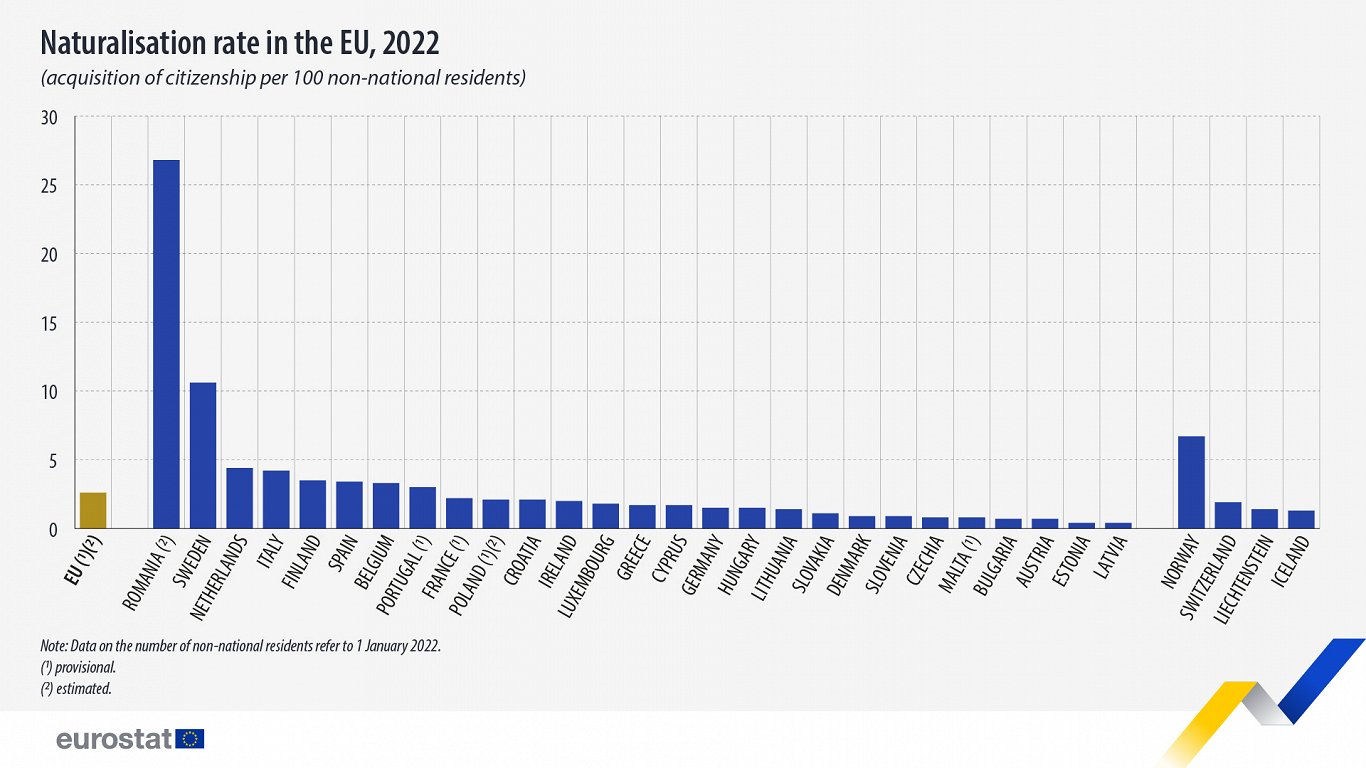
In 2022, 989 000 people acquired the citizenship of the EU country where they lived, an increase of around 20% (+163 100 people) compared with 2021 according to data on the acquisition of citizenship published by Eurostat February 29.
Most of the new citizenships (in absolute numbers) were granted by Italy (213 700; 22% of the EU total). Spain (181 800; 18% of the EU total) and Germany (166 600; 17%) granted the second and third highest numbers of new citizenships.
Latvia granted citizenship to 966 people in 2022, according to the figures. Of those taking Latvian citizenship who were not already citizens of another EU state, 57% were former ‘non-citizens’, 19% were former Russian citizens and 8.9% were citizens of the United Kingdom.
Of those people acquiring Latvian citizenship in 2022, 54% were female and 46% male. Their median age was 25 years. In 2022, the median age of persons acquiring citizenship in the whole of the EU was 31 years.
In relation to the total population on 1 January 2022, the highest number of citizenships were granted by Sweden (8.8 per thousand persons), followed by Luxembourg (8.3), Belgium (4.2), Spain (3.8) and Italy (3.6). For Latvia the equivalent figure was just 0.5.
An indicator commonly used to measure the effect of national policies on citizenship is the “naturalisation rate” or ratio of the total number of citizenships granted over the stock of non-national population in a country at the beginning of the year.
By this measure, Latvia and neighboring Estonia had the EU’s lowest naturalisation rates.
In 2022, Romania recorded the highest naturalisation rate among EU countries, with 26.8 citizenships granted per 100 non-national residents. Sweden stood at 10.6, followed by the Netherlands at 4.4 and Italy at 4.2.
At the other end of the scale, the lowest naturalisation rates per 100 non-national residents were recorded in Latvia and Estonia (both 0.4), Austria and Bulgaria (both 0.7), and Malta and Czechia (both 0.8).
